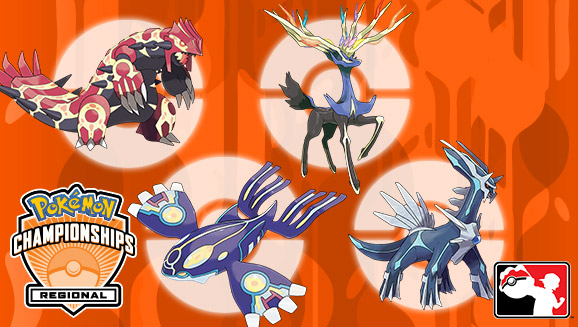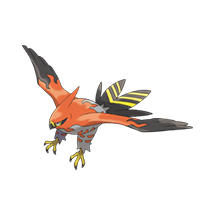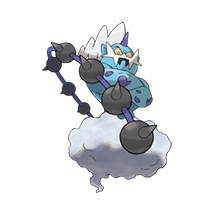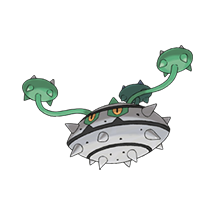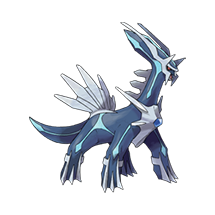The 2016 North American Video Game Winter Regionals are now complete. The battles are over, the players have returned home, but the dust hasn’t settled after these unbelievable events. After the initial event in Virginia, it seemed players had the 2016 Video Game Championships format figured out.
The remaining four Regional Championships shattered those perceptions. We saw four very different teams win the remaining Masters Division events, and hordes of unexpected Pokémon found success. Espeon, Arcanine, Porygon-Z, Walrein, Lucario, Lilligant, and even Pikachu were featured on teams that made it to the top cut of Masters Division events.
The wild results from Winter Regionals show there’s still a lot to explore in the young 2016 Video Game Championship format. We’ll take a look at the teams that made waves during Winter Regionals, starting with the team that dominated in Virginia.
Too Big to Fail?
The dominance of teams highlighting Primal Groudon and Xerneas was the big news after the first week of the Winter Regional Championships. Six of the eight players that made it to the top cut of Virginia’s Masters Division event used teams featuring these two Pokémon, most commonly choosing Kangaskhan, Talonflame, Salamence, and Smeargle as their teammates. The team Paul Chua used to win the Masters Division title in Virginia shows how this sort of team is normally constructed.
The biggest strength of Xerneas is that it can become almost unstoppable if it’s able to use Geomancy without taking too much damage. Paul’s team has Kangaskhan’s Fake Out and Smeargle’s Follow Me and Dark Void to help Xerneas get rolling. Primal Groudon complements Xerneas, as its Fire- and Ground-type attacks enable it to use supereffective attacks against most Pokémon that resist Xerneas’s Fairy-type attacks. Mega Salamence and Talonflame can deal heavy damage while supporting the team.
Clever tweaks by players using Xerneas and Primal Groudon helped them finish above rivals using similar teams. One savvy choice that Paul—and many other players—made was teaching Smeargle Wide Guard. Primal Kyogre, Primal Groudon, and Mega Salamence are all common Pokémon with strong spread attacks, so Wide Guard paid dividends for a lot of teams.
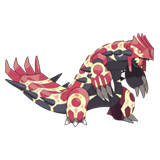 Virginia runner-up Alec Rubin used a Primal Groudon that used physical attacks instead of special attacks, a trend many Trainers followed in later weeks. Another popular alteration after the first weekend was to use a Cresselia that knew Trick Room, a swap made by both Virginia semi-finalist Tommy Cooleen and top-8 finisher Tiago Maltez. Perhaps the most jarring change was the Espeon Randy Kwa selected instead of Kangaskhan on the team he used to win Oregon’s Regional Championship. Similar teams saw success in the younger age divisions, helping Parker Hurley (Florida Juniors), Cory Connor (Oregon and California Juniors), and Raghav Malaviya (California Seniors) win Regional Championships.
Virginia runner-up Alec Rubin used a Primal Groudon that used physical attacks instead of special attacks, a trend many Trainers followed in later weeks. Another popular alteration after the first weekend was to use a Cresselia that knew Trick Room, a swap made by both Virginia semi-finalist Tommy Cooleen and top-8 finisher Tiago Maltez. Perhaps the most jarring change was the Espeon Randy Kwa selected instead of Kangaskhan on the team he used to win Oregon’s Regional Championship. Similar teams saw success in the younger age divisions, helping Parker Hurley (Florida Juniors), Cory Connor (Oregon and California Juniors), and Raghav Malaviya (California Seniors) win Regional Championships.
After the first tournament in Virginia, it seemed as though “the big six” was too powerful to stop. However, after the first weekend of competition, Primal Groudon and Xerneas were unable to live up to their hype. The duo teamed up to win only one more of the four remaining Masters Division Regional Championships, and they never monopolized a top cut the way they did in Virginia.
The success of teams using Primal Groudon and Xerneas at the Virginia Regionals seemed to make them a target during the second and third weeks of the Winter Regional Championships. Many players in later events likely focused their teams on finding ways to take down Primal Groudon, Xerneas, and their most common teammates. Plus, matches between similar teams can be tough to win consistently, so the danger of battling against many similar teams may have deterred players from using teams with Xerneas and Primal Groudon in later events.
Primal Tricks
A trend that may have contributed to the decline of Xerneas and Primal Groudon in later weeks is the rise of teams based around Trick Room. Teams built around Primal Groudon and Xerneas are built for Speed. Their naturally quick teammates are often trained to be as speedy as possible, Xerneas’s Geomancy increases its own Speed by two levels, and Talonflame’s Tailwind increases the Speed of the entire team. With so much focus on Speed, Trick Room’s effect of allowing slower Pokémon to move before quicker Pokémon is devastating.
We saw two distinct Trick Room teams rise to the top tables at Winter Regionals: those that used Primal Kyogre and Primal Groudon, and those that combined Primal Kyogre with Dialga. Primal Kyogre’s presence on both teams isn’t a coincidence. Because Primal Groudon appears on so many teams, players knew they would have an advantage if they could get a Speed advantage with Primal Kyogre. We’ll look at teams that doubled up on Primal Reversion first.
The team Aaron Zheng used to win in California maximizes raw power. Not only do Primal Kyogre and Primal Groudon have some of the highest stats of any Pokémon in the game, but since Primal Reversion is different from Mega Evolution, they can be used alongside a Mega-Evolved Pokémon. Smeargle is another fantastic Pokémon for increasing the overall strength of a team. Even though it isn’t a Legendary Pokémon or able to Mega Evolve, the power of Dark Void and Follow Me causes opponents to treat Smeargle differently than other Pokémon. Combining Primal Kyogre, Primal Groudon, Smeargle, and a Mega-Evolved Pokémon adds up to a huge amount of power on one team.
 Pokémon on teams built around Trick Room tend to be slow for obvious reasons. In a tournament format where Smeargle is popular, this can make them easy targets for an opposing Smeargle’s Dark Void. Aaron’s team had some tricks to keep his Pokémon awake against Dark Void, and we saw several successful teams use similar techniques during Winter Regionals. Bronzong’s main role on Aaron’s team was to use Trick Room, so he gave it a Lum Berry to hold. A Lum Berry makes Bronzong effective against the popular duo of Smeargle and Xerneas; it can use Trick Room even if Smeargle hits it with Dark Void, and then bonk Xerneas with a supereffective Gyro Ball on the next turn. The other way to stop opposing Smeargle is with Crafty Shield, a move that Aaron’s Smeargle learned. Teams using Trick Room often employ a slow Smeargle, so a Smeargle showdown would normally end with the slower team in dreamland. Many slower Smeargle are taught Crafty Shield to keep their teams awake; it is a move that blocks Dark Void on both Smeargle and its partner. Crafty Shield can also be helpful to stop other non-damaging moves, especially Thunder Wave and Taunt.
Pokémon on teams built around Trick Room tend to be slow for obvious reasons. In a tournament format where Smeargle is popular, this can make them easy targets for an opposing Smeargle’s Dark Void. Aaron’s team had some tricks to keep his Pokémon awake against Dark Void, and we saw several successful teams use similar techniques during Winter Regionals. Bronzong’s main role on Aaron’s team was to use Trick Room, so he gave it a Lum Berry to hold. A Lum Berry makes Bronzong effective against the popular duo of Smeargle and Xerneas; it can use Trick Room even if Smeargle hits it with Dark Void, and then bonk Xerneas with a supereffective Gyro Ball on the next turn. The other way to stop opposing Smeargle is with Crafty Shield, a move that Aaron’s Smeargle learned. Teams using Trick Room often employ a slow Smeargle, so a Smeargle showdown would normally end with the slower team in dreamland. Many slower Smeargle are taught Crafty Shield to keep their teams awake; it is a move that blocks Dark Void on both Smeargle and its partner. Crafty Shield can also be helpful to stop other non-damaging moves, especially Thunder Wave and Taunt.
Several other players had strong Regionals finishes with similar teams. Kamaal Harris made it to the semifinals in Florida with Primal Kyogre, Primal Groudon, and Salamence, but he deviated from Aaron by using Cresselia to set Trick Room and teaching the unusual move Roar to his Primal Groudon. Roar can escort Xerneas out of battle after it uses Geomancy or force Pokémon trying to use Trick Room to retreat. Kamaal rounded his team out with Thundurus and the rarely-seen Lucario. Former National Champion Gavin Michaels used a similar team, but went with more conservative move choices and Amoonguss instead of Lucario. Oregon semi-finalist Gary Qian used some similar Pokémon, but he also surprised his opponents with Porygon-Z. Nikolai Zielinski was undefeated in Illinois—until he lost in the first round of the top cut. His team was similar to Aaron’s, only with Talonflame and Cresselia replacing Mawile and Bronzong. We also saw some teams using Primal Kyogre and Primal Groudon that forewent Trick Room completely, including the team Luka Trejgut used to win Florida’s Senior Division title.
Turning Back Time
The other trend we saw in teams using Trick Room was based around Dialga and Primal Kyogre. Check out the team Wolfe Glick used to win in Florida:
Wolfe is a player renowned for frequently retreating his Pokémon to stay in an advantageous position. Selecting Dialga as a restricted Pokémon instead of Primal Groudon, Primal Kyogre, Rayquaza, or Xerneas encourages the defensive playstyle he favors. One major reason for the shift in style is that Dialga is often taught Trick Room, so it spends some of its turns supporting its team rather than dealing as much damage as possible.
 Wolfe’s team featured several Pokémon that can be tricky to play against. Since Wolfe gave his Dialga Sitrus Berry to hold, he had to find a different item for Thundurus. Focus Sash isn’t an item we see given to Thundurus very often, but it allowed Wolfe to train his Thundurus to be fast instead of sturdy. That high Speed can be helpful; for instance, it lets his Thundurus use Taunt before most opposing Thundurus, preventing them from using Taunt on his Dialga before it can use Trick Room.
Wolfe’s team featured several Pokémon that can be tricky to play against. Since Wolfe gave his Dialga Sitrus Berry to hold, he had to find a different item for Thundurus. Focus Sash isn’t an item we see given to Thundurus very often, but it allowed Wolfe to train his Thundurus to be fast instead of sturdy. That high Speed can be helpful; for instance, it lets his Thundurus use Taunt before most opposing Thundurus, preventing them from using Taunt on his Dialga before it can use Trick Room.
We frequently see Trainers teach their Salamence Draco Meteor, but Wolfe was one of several Trainers who went with a different move at Regionals. His unexpected choice of Substitute probably surprised most of his opponents. Wolfe’s Landorus may have been his trickiest Pokémon: it helped the team on defense with its Intimidate Ability, and the Choice Band it held allowed it to deal huge damage. Choice Band is particularly exciting when paired with the hazardous Explosion. Few Trainers risk Explosion, but the combination of Choice Band and Explosion can deal massive damage to almost any opponent at the cost of Landorus’s remaining HP. It’s a risky combination that his opponents may not have expected from a famously conservative player.
We saw several other players use the pairing of Dialga and Primal Kyogre to great success. Alex Underhill was able to show off his top-8 team on the live stream from Illinois. He used Cresselia as a second Pokémon that knew Trick Room, and it surprised the crowd by using Lunar Dance to heal a teammate. He also had Kangaskhan and Amoonguss instead of Landorus and Thundurus, giving his team a very different feel from Wolfe’s. Conan Thompson’s Oregon top-8 team had some tricks we didn’t see from other players. He didn’t teach his Dialga Trick Room, leaving that job for his Cresselia, and he had a Gengar that could Mega Evolve. Emilio Estrada finished one spot behind Conan, and he was the only one of the four Trainers to use Mawile and Talonflame. Dialga helped win a couple of Junior Division Regional Championships as well, once paired with Primal Kyogre by Connor Woitalla and once paired with Primal Groudon by Emma Cox.
A Storm of Surprises
Many different teams found success in February. Drew Nowak’s Thundurus was a big factor when he won the live-streamed Regionals in Illinois. Thundurus is normally used to support other Pokémon with moves like Taunt and Swagger, but Drew gave his Thundurus a Life Orb to hold and taught it Wild Charge and Superpower instead. Even after his opponents picked up on his unexpected strategy, they found they were unprepared to deal with it. The most surprising finish by an Electric-type Pokémon was definitely Ashton Cox’s Pikachu making it to the semifinals in Florida. Carson St. Denis also won Oregon’s Senior Division event using a Raichu that evolved from one of the Pikachu that knew the move Endeavor given away in the Pokémon Global Link’s Pikachu Cup. Perhaps players will look to find more ways to fit Electric-type Pokémon on their teams moving forward after the success of these players.
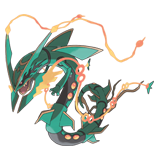 One surprising trend was that teams combining Rayquaza and Primal Kyogre were unable to achieve victory in the Masters Division. Rayquaza and Kyogre have been an extremely popular pairing in Europe as a solution to Groudon, and both teams that made it to the finals of the European Challenge Cup, a Regional-level event that took place during North American Winter Regionals, featured Rayquaza and Kyogre. Teams combining Kyogre and Rayquaza seemed nearly as popular as those combing Groudon and Xerneas in most of the world before Winter Regionals, so the pair achieving only six top cut appearances in North America’s Masters Division was very surprising. The duo was much more successful in the Senior Division, winning on Dylan Salvanera’s teams in both Virginia and Illinois.
One surprising trend was that teams combining Rayquaza and Primal Kyogre were unable to achieve victory in the Masters Division. Rayquaza and Kyogre have been an extremely popular pairing in Europe as a solution to Groudon, and both teams that made it to the finals of the European Challenge Cup, a Regional-level event that took place during North American Winter Regionals, featured Rayquaza and Kyogre. Teams combining Kyogre and Rayquaza seemed nearly as popular as those combing Groudon and Xerneas in most of the world before Winter Regionals, so the pair achieving only six top cut appearances in North America’s Masters Division was very surprising. The duo was much more successful in the Senior Division, winning on Dylan Salvanera’s teams in both Virginia and Illinois.
Dialga wasn’t the only restricted Pokémon that was able to break through the dominance of Groudon, Kyogre, Rayquaza, and Xerneas. Kyurem White was a surprisingly popular choice, making it to the top-8 of every Masters Division event except Oregon (Patrick Smith, Franklin Lewis, Joohwan Kim, Will Aiken, and Mitchell Moscrop all had interesting takes on Kyurem teams). Yveltal had an impressive second-place finish in Florida on the team of veteran Matthew Coyle, and fan-favorite Mewtwo managed to squeak into the Oregon top cut thanks to Samuel Haarsma.
The results of the Winter Regional Championships are sure to change the way players approach future tournaments. Midseason Showdowns have already begun, so check the event finder to find one happening near you. Stay tuned for the Spring Regional Championships in May, and remember to check out Pokemon.com/strategy to find all the most recent strategy content and tournament coverage.
